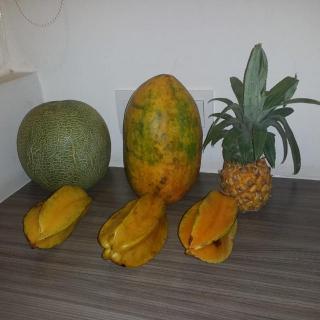Must-try Dishes
Nasgor - Nasi Goreng (fried rice) - This is Indonesia's beloved fried rice, often made with fragrant spices, chicken, and vegetables, and topped with a fried egg. Locals enjoy it for breakfast or late-night snacks, typically at casual warungs.
Martabak - Martabak (stuffed pancake) - A savory or sweet stuffed pancake filled with eggs, minced meat, or chocolate and condensed milk, cooked on a griddle until crispy. Street vendors serve it hot and fresh, sometimes with a dash of spicy curry on the side.
Rendang - Rendang Daging (slow-cooked beef) - Slices of beef simmered for hours in a rich coconut milk and spice mixture until tender, resulting in deep flavors and a thick sauce. It's a popular dish for festive occasions, often served with steamed rice and shared among family.
Soto Betawi - Soto Betawi (beef soup) - A comforting soup made with beef, coconut milk, and a variety of herbs, usually served with rice and a side of fried shallots. It's a typical choice for lunch, especially in Jakarta, where locals enjoy it while discussing the latest news.
Lumpia Semarang - Lumpia (spring rolls) - Crispy spring rolls filled with bamboo shoots, chicken, and eggs, sometimes paired with a tangy dipping sauce. They're often enjoyed as a light snack or appetizer but can make a filling meal, especially with a side of fried tofu.
Ayam Penyet - Ayam Penyet (smashed fried chicken) - Fried chicken that’s smashed and served with sambal and fried tofu, often accompanied by rice. Locals usually eat it from small roadside stalls, where it’s messy but utterly satisfying, especially with a side of fresh vegetables.
Ketupat - Ketupat (rice cakes) - Glutinous rice cakes wrapped in woven palm leaves, served with spicy dishes, especially during Eid celebrations. It’s a common sight at family gatherings, adding a festive touch to sharing meals.
Bakwan Jagung - Bakwan (corn fritters) - Crispy fritters made from sweet corn and a blend of spices, often enjoyed as a side dish or snack. During the rainy season, you'll find them served hot by street vendors, perfect for warming up.
Desserts & Drinks
Kopi Tubruk - Kopi Tubruk (strong coffee) - A bold coffee made by boiling coarse ground Robusta beans with sugar, often enjoyed black. Locals usually sip it in the morning or afternoon, sometimes in small cups over conversations with friends. By the way, you might find it a bit gritty if you’re used to filtered coffee!
Es Teh Manis - Es Teh Manis (sweet iced tea) - A refreshing iced tea prepared from sweet black tea, served with ice and a generous amount of sugar. It's especially popular during the hot afternoons at street stalls, paired with small snacks. Try not to confuse it with unsweetened tea—it’s a local favorite that really hits the spot on a sweltering day.
Arak Bali - Arak Bali (traditional spirit) - Distilled from fermented rice or palm sap, this strong liquor is usually served ice-cold in small glasses. While not as common in Jakarta, it’s often enjoyed during special celebrations, and locals sometimes mix it with fresh fruit juices for a festive touch. Just a heads up, you generally won’t find it in every establishment since serving is often done in specific locations.
Kue Cubir - Kue Cubir (rice flour cake) - These are delightful, chewy cakes made from rice flour, filled with palm sugar and sometimes grated coconut. Typically served warm, locals love munching on them during gatherings or as an afternoon snack. Watch out, you might get addicted; they disappear quickly at traditional markets!
Es Campur - Es Campur (mixed iced dessert) - A colorful mix of shaved ice topped with various ingredients like sweet jelly, fresh fruits, condensed milk, and sometimes on top of a scoop of sweetened beans. It's commonly sold by street vendors, especially during the hottest months. Ordering it is easy, just ask for “es campur,” but be ready for an explosion of sweetness that’s sure to cool you down!



